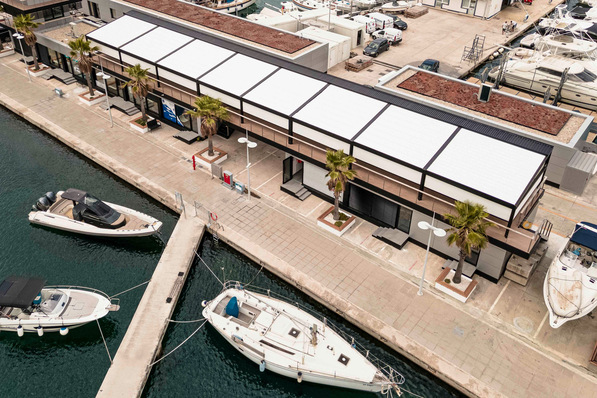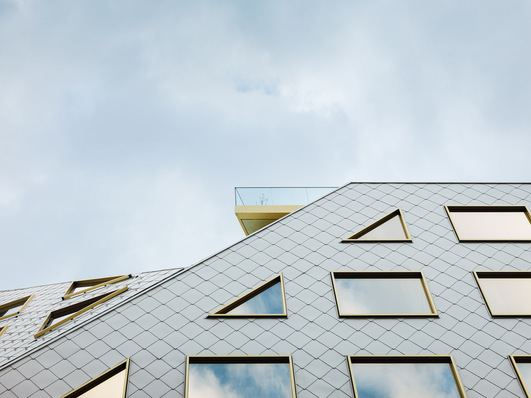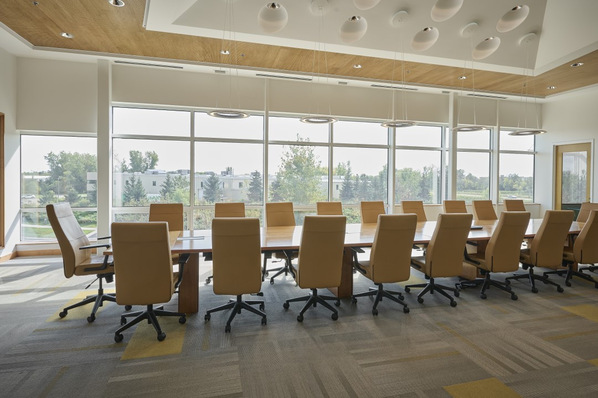The Ruselokka Skole in Oslo is a school for all ages ranging from elementary to tenth year school. In 2017, the decision was taken to demolish the old school building and build a new school in the same spot. The new school was planned in line with high environmental standards and was completed in 2021 as a nearly zero-energy building.
The modern school building has seven floors and a total surface area of around 110,860 square feet. It provides space for a school population of almost 1,000 students from first to tenth year. A green roof terrace creates additional outdoor space for the inner-city school building.
[State-of-the-art smart glass for Nestlé’s headquarters in Switzerland]
The school is a model project from FutureBuilt, a Norwegian platform for urban climate innovation aimed equally at developers, architects, municipalities, contractors and building users. The aim is to produce 100 model projects that meet the UN Sustainable Development Goals and those of the Paris Climate Conference to reduce CO2 emissions by at least 50 per cent.

SageGlass
The materials cycle and carbon footprint
Innovative strategies were used to build the Ruselokka Skole in order to fulfill the initiative’s stringent requirements. One focal point was the circular reuse of materials and building components from the old school building to boost the local value chain, save gray energy, reduce waste and keep CO2 emissions to a minimum. Another focal point was construction as a nearly zero-energy building (nZEB) to the Passivhaus standard. A third aspect of the ambitious strategy was high quality standards for a healthy indoor climate, a lighting concept based on daylight, and high standards for acoustics and noise protection. During the construction process, operations on the building site were emissions-free.
[Twisting museum in the Norwegian woods]
The reinforced concrete structure of the building used a special low-carbon concrete. The CEM III/B blast furnace cement used for concrete production reduced CO2 emissions per cubic meter of concrete by up to 25 percent. The concrete takes longer to harden, but this wasn't a problem on a summer building site. Reinforcements were made from recycled steel.
Energy production and smart solar protection
Solar cells on the facade and other solar modules on the green roof help produce energy. Each year, the building operators expect the solar energy system measuring over 7,500 square feet to yield 75,000 kilowatt hours of energy. This is intended to contribute to the school’s power supply.
Dynamic solar protection glazing from SageGlass, a Saint-Gobain company, also helped achieve interior comfort. The smart switchable glass adapts to weather conditions and regulates light and heat in the building automatically. The transparency of the glass and the unimpeded view of the outdoors are always preserved.

















